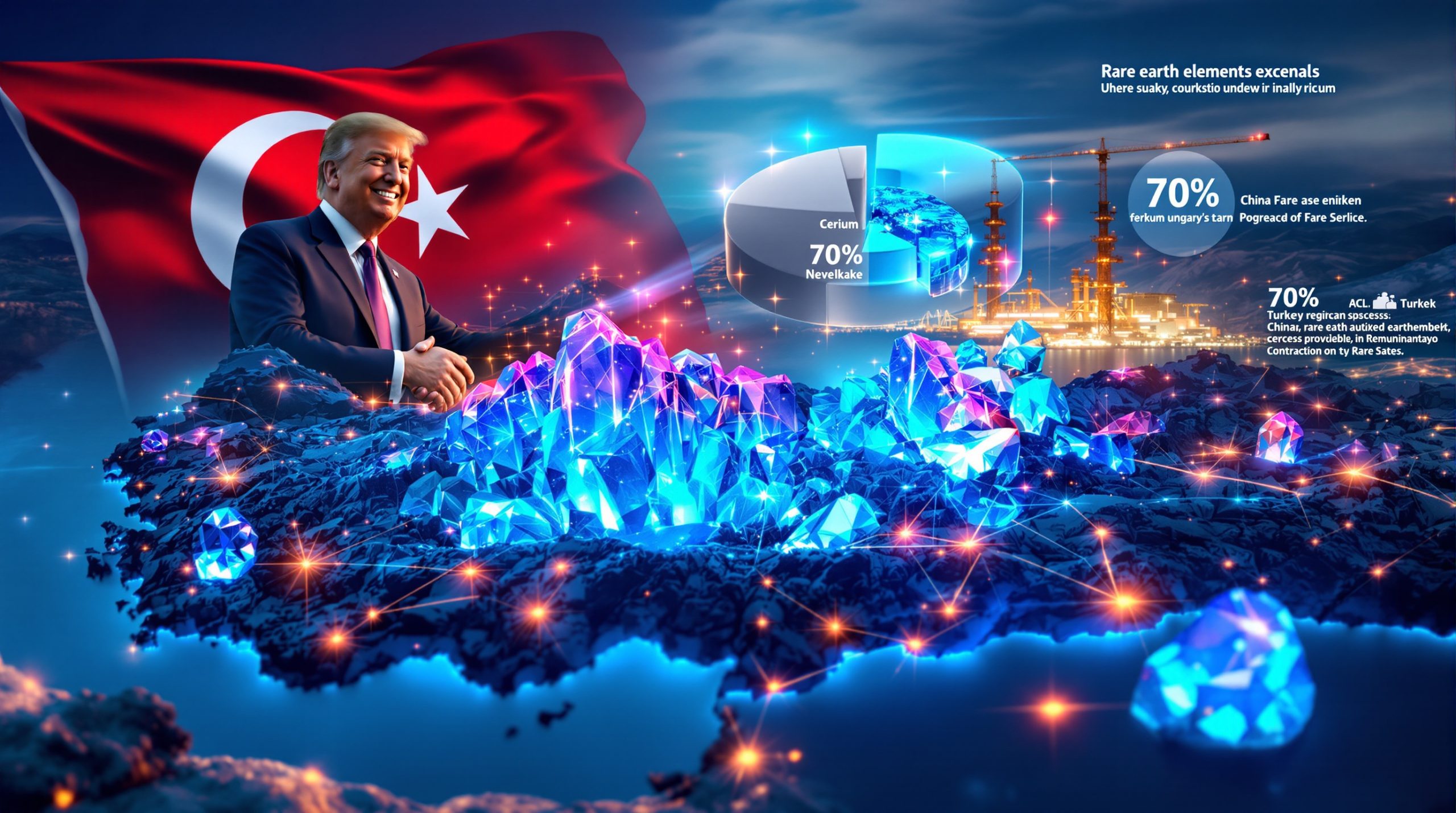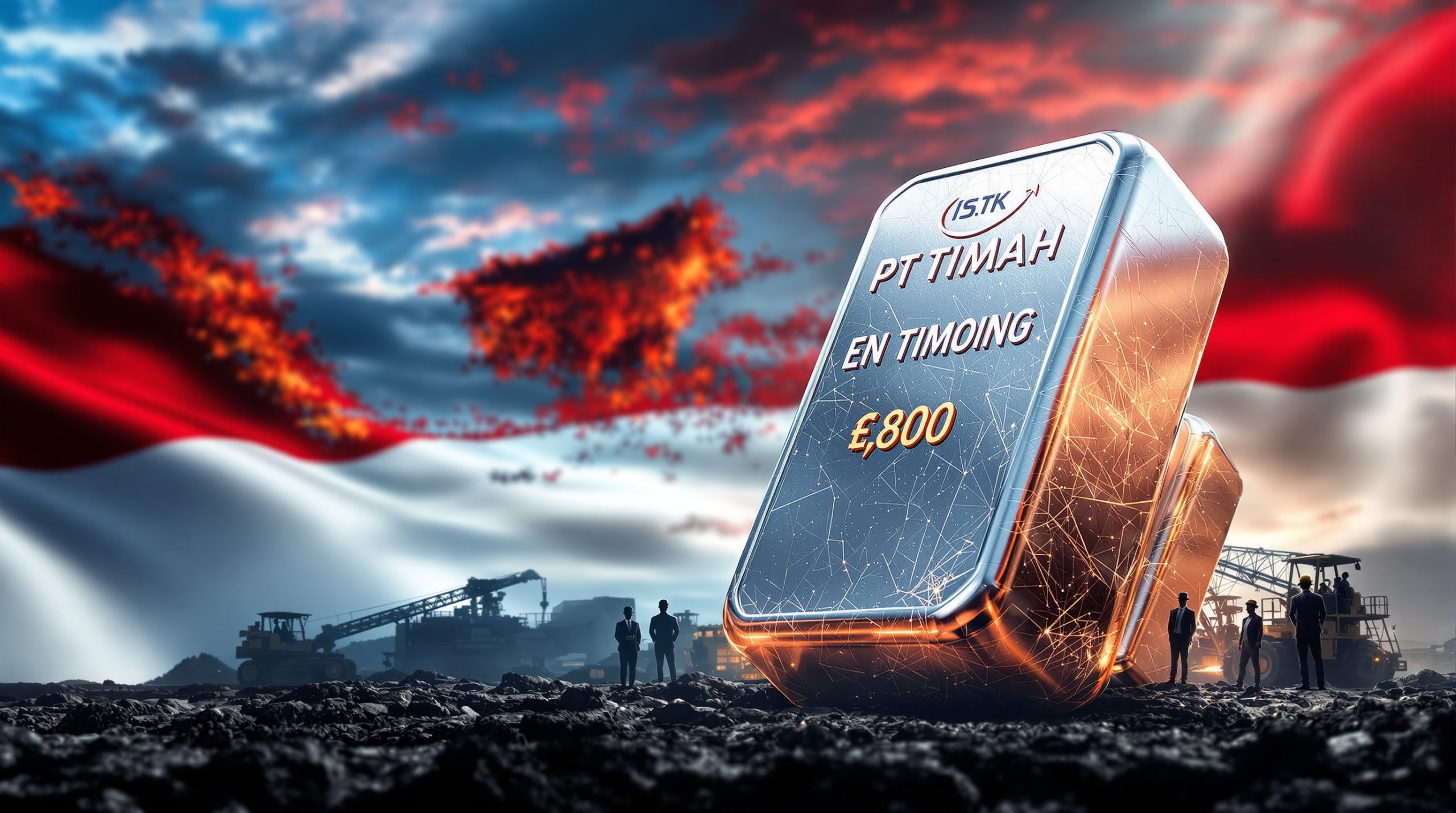Indonesia's Strategic Push for Greater State Control of Freeport Mining Operations
Indonesia's government is pursuing an ambitious plan to increase its ownership stake in PT Freeport Indonesia by more than 10% beyond its current majority position. This strategic move, announced by Mining Minister Bahlil Lahadalia, represents the latest chapter in Indonesia's ongoing efforts to assert greater control over its valuable mineral resources. The indonesia state ownership freeport indonesia initiative reflects a broader trend of resource nationalism that has characterized the country's approach to managing its natural wealth.
Current Ownership Structure of Freeport Indonesia
State-owned enterprise control is firmly established, with Indonesia's government currently holding 51.23% through PT Indonesia Asahan Aluminium (Inalum). This majority stake gives the government significant influence over operations and strategic decisions.
The regional government stake is also significant, with the Papua provincial government maintaining a 10% ownership share, ensuring some local representation in the mining operation that dominates the region's economy.
Freeport-McMoRan's position as the American mining giant has been reduced over time, now retaining approximately 38.77% ownership after previously controlling most of the operation. The company's Freeport gold sales forecast remains a critical factor for market watchers assessing the long-term implications of these ownership changes.
The transition timeline to this ownership structure was established following the landmark $3.85 billion divestment deal completed in 2018, which transformed the company's governance structure.
Historical Context of Indonesia's Resource Nationalism
Indonesia's push for increased ownership reflects a broader pattern of resource nationalism that has evolved significantly over the past decade, transforming the mining industry evolution throughout the region.
In the pre-2012 arrangement, Freeport-McMoRan controlled approximately 90% of the Grasberg operations, with minimal Indonesian government influence over one of the world's premier mining assets.
A major regulatory shift occurred when mining law amendments in 2012 established new foreign ownership limitations, forcing international companies to adapt to Indonesia's changing approach to resource governance.
The subsequent negotiation period involved extended discussions between 2012-2018, ultimately leading to the current ownership structure after years of sometimes tense negotiations between the company and Indonesian authorities.
A critical contract transformation occurred with the replacement of the long-standing Contract of Work with a Special Mining Business License (IUPK), fundamentally changing the legal relationship between Freeport and the Indonesian government.
What Motivates Indonesia's Push for Greater Ownership?
Economic and Strategic Considerations
The Indonesian government's desire for increased control stems from multiple strategic objectives that align with national development goals.
Resource value maximization stands as a primary motivation, with the government seeking to capture greater economic benefits from one of the world's largest copper and gold mines located within its borders.
Downstream industry development represents another key objective, supporting Indonesia's ambitions to build domestic processing capabilities rather than simply exporting raw materials.
Foreign exchange benefits are substantial, as increasing national revenue streams from mineral exports helps stabilize Indonesia's currency and economic position.
Strategic resource control has become increasingly important globally, with Indonesia enhancing sovereignty over critical mineral assets that are vital to both traditional industries and emerging technologies, similar to Australia's strategic minerals reserve initiatives.
Political and Public Perception Factors
The government's stance also reflects domestic political considerations that influence resource policy decisions.
Resource nationalism sentiment remains strong in Indonesia, with substantial public support for greater Indonesian control of natural resources that were historically dominated by foreign companies.
Regional development promises are politically important, with commitments to channel more mining benefits to Papua province addressing long-standing concerns about equitable distribution of resource wealth.
Legacy-building opportunities attract political leaders, with the current administration's desire to demonstrate strong governance of national assets providing political capital domestically.
Regulatory consistency matters for policy credibility, with the government's approach aligning with broader mining governance challenges that have been established over multiple administrations.
What Are the Implications for Mining Operations and Investments?
Operational Considerations
The ownership restructuring carries significant operational implications that will shape how the mine functions in the coming decades.
| Aspect | Current Status | Potential Future Impact |
|---|---|---|
| Management Control | Joint governance structure | Increased Indonesian influence in decision-making |
| Investment Planning | Shared capital expenditure | Potentially higher Indonesian contribution requirements |
| Operational Timeline | License secured until 2041 | Future extensions likely contingent on ownership changes |
| Technology Transfer | Limited knowledge sharing | Increased emphasis on technical capacity building |
This ownership evolution creates both challenges and opportunities for operational excellence, as decision-making processes adapt to reflect different stakeholder priorities.
Investment Climate Considerations
The government's approach sends important signals to the global mining landscape insights about Indonesia's approach to foreign investment.
Regulatory predictability concerns have emerged, as changing ownership requirements may create uncertainty for investors considering long-term capital commitments in Indonesia's mining sector.
The precedent-setting potential cannot be ignored, as similar expectations could extend to other mining operations in Indonesia, creating a new standard for resource development partnerships.
Risk-reward calculations are becoming more complex, as investors must weigh resource quality against ownership limitations when making investment decisions about Indonesian projects.
The partnership evolution trend is clear, with Indonesia moving toward models with greater Indonesian participation becoming the new normal for significant mining operations.
How Does Freeport Indonesia Compare to Other Major Mining Operations?
Production and Economic Significance
Freeport Indonesia's Grasberg complex remains one of the world's premier mining operations, with economic importance that extends beyond simple production statistics.
Copper production scale places it among the top three copper producers globally, with output that significantly influences global copper supply dynamics.
Its gold output significance is equally impressive, ranking as one of the largest gold-producing mines worldwide and contributing substantially to Indonesia's precious metals exports.
The employment impact extends throughout the region, providing over 30,000 direct and indirect jobs that support communities throughout Papua and beyond.
The economic contribution cannot be overstated, as Freeport operations represent a significant portion of Papua's regional GDP and contribute substantially to Indonesia's export earnings.
Ownership Models in Comparative Context
Indonesia's approach to mining ownership reflects a global trend but with distinct characteristics that differentiate it from other resource-rich nations.
The Chilean model offers an interesting contrast, as state-owned Codelco operates alongside private mining companies in a hybrid system that has evolved over decades.
The Australian approach provides another perspective, with primarily private ownership operating under government regulation and taxation rather than direct ownership stakes.
African variations show the diversity of possible approaches, ranging from joint ventures to full state ownership in different jurisdictions depending on local political and economic factors.
The Indonesian hybrid represents a middle path, with majority state ownership combined with significant private participation allowing for both national control and international expertise.
What Are the Potential Outcomes of Indonesia's Ownership Push?
Negotiation Scenarios and Timelines
The path to increased state ownership involves several potential scenarios that will unfold over the coming years.
A negotiated purchase represents one possibility, where Indonesia could acquire additional shares through direct payment based on mutually agreed valuation methods.
License extension leverage provides significant government influence, as ownership changes could be tied to extending operations beyond the current 2041 permit expiration.
A gradual transition may be preferred by all parties, with phased implementation of ownership changes over several years to minimize operational disruption.
Investment-linked adjustments could create win-win scenarios, with ownership shifts connected to new capital expenditures that expand production or extend mine life.
Economic and Market Implications
The ownership restructuring carries significant market implications that extend beyond Indonesia's borders.
Copper market impact could be substantial, potentially influencing global copper supply planning as production decisions at Grasberg reflect different ownership priorities.
Investment signal effects will be closely watched, as other mining companies assess how Indonesia's approach affects the overall investment climate for resource development.
Local economic benefits could increase with greater Indonesian ownership, potentially enhancing revenue streams for national and regional development if managed effectively.
Supply chain considerations extend to industries relying on copper output, with implications for downstream manufacturing that depends on stable copper supplies.
How Does Indonesia's Approach Fit Into Global Resource Nationalism Trends?
Regional Resource Control Patterns
Indonesia's strategy reflects broader regional approaches to resource governance that have evolved significantly in recent decades.
Southeast Asian approaches vary considerably, with different models of state participation across ASEAN nations reflecting diverse political systems and economic priorities.
Pacific Rim comparisons highlight contrasting approaches, with Indonesia's model differing substantially from approaches in Australia, Papua New Guinea, and the Philippines.
Resource governance evolution shows a clear pattern, shifting from colonial-era concessions to national sovereignty models that prioritize domestic benefit from natural resources.
The investment attraction balance remains crucial, as countries strive to maintain foreign investment while increasing domestic benefits—a delicate equilibrium that Indonesia continues to navigate.
Global Mining Industry Responses
The mining sector has developed various approaches to navigate changing ownership requirements, adapting business models to accommodate evolving government expectations.
Partnership adaptation has become essential, with companies creating more integrated joint venture models that better align with national development objectives.
Value proposition enhancement strategies have emerged, with mining companies offering technology transfer and capacity building beyond simple resource extraction.
Local content integration continues to expand, with developing stronger domestic supply chains becoming a standard expectation for international mining operations.
Community development focus has intensified, with companies expanding social license through development contributions that demonstrate tangible local benefits.
What Legal and Regulatory Frameworks Support Indonesia's Ownership Strategy?
Mining Law Evolution
Indonesia's mining regulatory framework has evolved significantly, creating the legal foundation for increased domestic participation in the sector.
The 2009 Mining Law established the foundation for increased domestic participation, beginning the transformation of Indonesia's approach to mining investment.
The 2012 Amendments took this further, introducing specific foreign ownership limitations that directly impacted Freeport's operations and long-term planning.
The 2020 Mining Law revisions further refined domestic participation requirements, strengthening the government's position in negotiations with international mining companies.
Implementing regulations have provided crucial details, with ministerial decrees detailing divestment mechanisms and creating the practical framework for ownership transitions.
Contract and License Structures
The transition from contracts to licenses represents a fundamental shift in Indonesia's approach to mining governance and investment.
The Contract of Work system previously provided stable long-term arrangements that favored international investors with significant protections.
The new Special Mining Business License (IUPK) framework creates different terms and conditions, giving the government greater flexibility and control over mining operations.
Permit renewal mechanisms have changed substantially, with new processes for extending operational rights that provide leverage for the government in ownership negotiations.
Regulatory compliance requirements have expanded, with enhanced environmental and social obligations reflecting changing expectations for responsible mining.
What Challenges Face Indonesia's Mining Ownership Strategy?
Implementation Hurdles
Several practical challenges could affect the ownership transition, potentially complicating the government's plans.
Valuation disagreements may emerge, with determining fair market value for additional ownership stakes often becoming contentious in such transactions.
Capital availability could become an issue, as securing funding for additional share purchases requires substantial financial resources from the government or its designated entities.
Technical expertise retention remains critical, with maintaining operational excellence during transition periods essential for production continuity and safety.
International investor confidence must be preserved, as Indonesia needs to balance assertiveness with maintaining its attractiveness for mining investment broadly.
Balancing Competing Interests
The government must navigate multiple stakeholder concerns, requiring careful management of diverse priorities.
National vs. regional interests sometimes diverge, requiring balance between central government and Papua provincial priorities in how mining benefits are distributed.
Economic vs. political objectives may create tension, as the government weighs financial returns against sovereignty goals in determining optimal ownership structures.
Short-term vs. long-term considerations require careful analysis, balancing immediate control versus sustainable development over the multi-decade life of mining operations.
Domestic vs. international perceptions must both be managed, as the government balances local expectations with global investor concerns about resource nationalism.
What Does the Future Hold for Indonesia's Mining Sector?
Strategic Mineral Development Plans
Indonesia's approach to Freeport reflects broader mineral sector ambitions that will shape the country's economic development.
Downstream processing expansion remains a priority, with the government building domestic smelting and refining capacity to capture more value from mineral resources.
Value-added product development extends this strategy, moving beyond raw material exports to create higher-value products domestically.
Technology integration is accelerating, with modernizing mining operations through advanced technologies improving efficiency and environmental performance.
Sustainability implementation has become non-negotiable, with enhancing environmental and social performance standards essential for maintaining social license to operate.
Long-Term Vision for Resource Governance
The government's approach suggests an evolving vision for resource management that will influence Indonesia's development trajectory.
A sovereignty-centered model is emerging, asserting greater national control over strategic resources while maintaining sufficient international participation.
Development-linked extraction represents a key principle, connecting mining more directly to national development goals rather than treating it as an isolated sector.
A balanced partnership approach aims for sustainability, maintaining foreign expertise while increasing domestic benefits through carefully structured arrangements.
Resource transition planning is increasingly important, with consideration of post-mining economic diversification essential for long-term prosperity beyond resource extraction.
FAQ: Indonesia's Mining Ownership Strategy
Why is Indonesia seeking greater ownership of Freeport Indonesia?
The government aims to maximize economic benefits from its natural resources, strengthen sovereignty over strategic assets, and ensure greater domestic control of mining operations that have historically been dominated by foreign companies.
How might increased state ownership affect Freeport's operations?
While day-to-day operations may continue largely unchanged, strategic decision-making, investment planning, and profit distribution would reflect greater Indonesian government influence and priorities.
What precedent does this set for other mining operations in Indonesia?
The Freeport case establishes expectations that other major mining operations in Indonesia will likely face similar ownership requirements, particularly as permits come up for renewal or extension.
How does Indonesia's approach compare to other resource-rich nations?
Indonesia's model represents a middle path between fully nationalized operations (as seen in some countries) and the primarily private ownership model common in Western nations, creating a hybrid that maintains foreign expertise while increasing domestic benefits.
Further Exploration:
Readers interested in learning more about Indonesia's mining sector developments can also explore related educational content on Southeast Asian mining policy developments and resource nationalism trends in copper-producing nations.
Want to Invest in the Next Major Mineral Discovery?
Stay ahead of the market with Discovery Alert's proprietary Discovery IQ model, which delivers instant notifications on significant ASX mineral discoveries, turning complex data into actionable investment insights. Explore why historic discoveries can generate substantial returns by visiting Discovery Alert's dedicated discoveries page and begin your 30-day free trial today.




